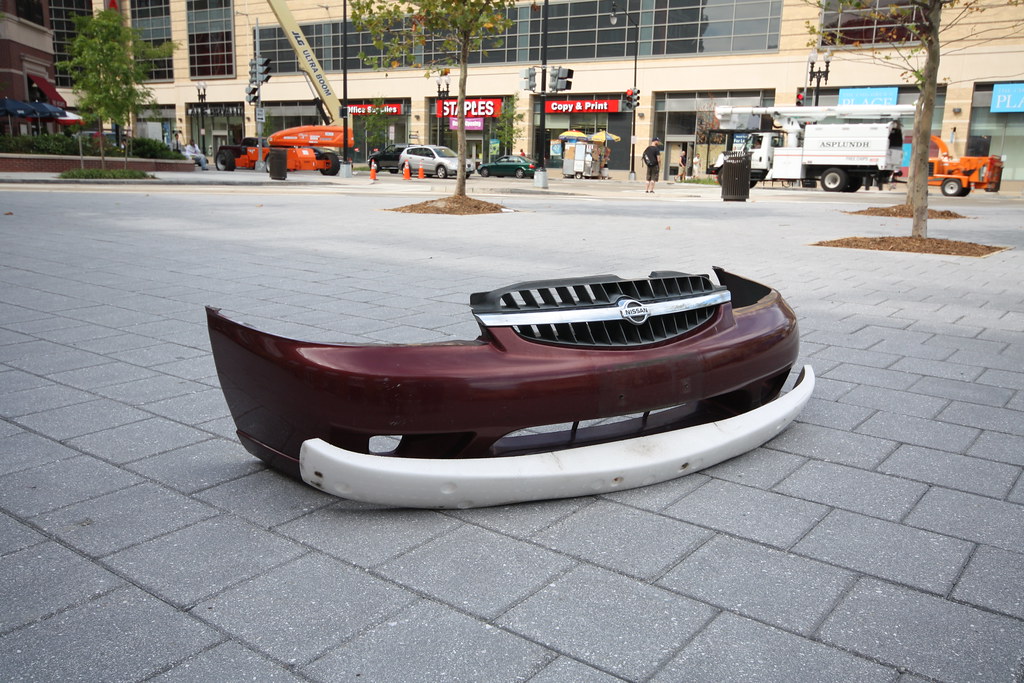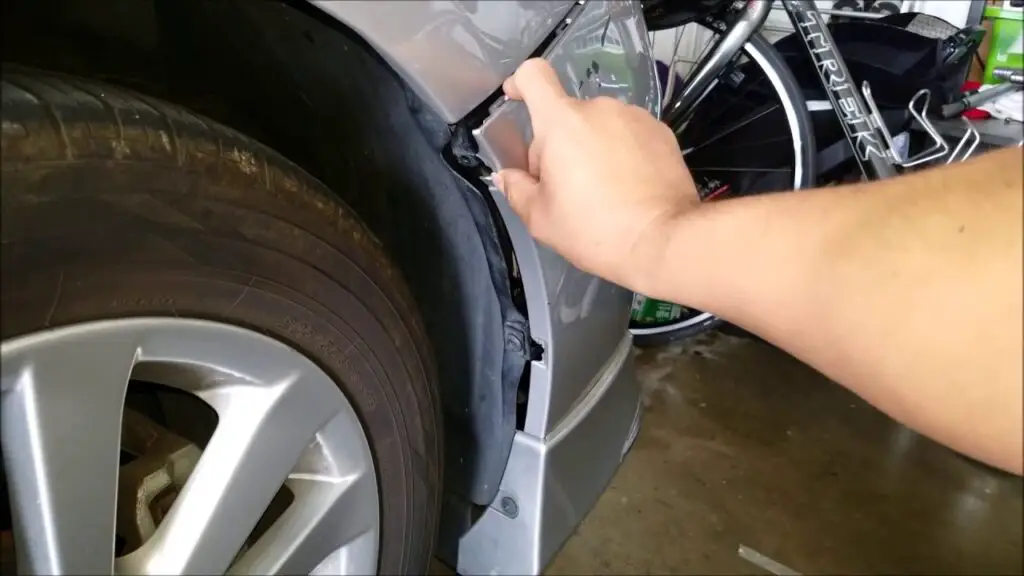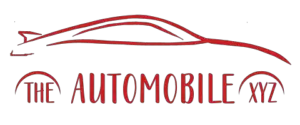Imagine cruising down the road, wind in your hair, when suddenly you hear a loud thud and see your car bumper falling off. It’s a frustrating and potentially dangerous situation, but fear not, because I’m here to guide you through the process of fixing that bumper and getting back on the road.
When it comes to fixing a car bumper that has fallen off, there are a couple of key steps to keep in mind. First, assess the damage and determine if it’s something you can fix yourself or if you’ll need the help of a professional. Then, gather the necessary tools and materials, such as a replacement bumper, screws, and a socket wrench. With these basics in place, you’ll be ready to tackle the repair and restore your car’s appearance and functionality.
As an experienced mechanic, fixing a car bumper that’s falling off can be a straightforward process. Here’s what you’ll need to do:
- Start by removing any screws or bolts that are holding the bumper in place.
- Gently pull the bumper away from the car and assess the damage. Look for any broken clips or brackets.
- If there are any broken parts, replace them with new ones.
- Secure the bumper back onto the car, making sure all the clips and bolts are in place.
- Lastly, test the bumper to ensure it’s securely attached and aligned properly with the surrounding body panels.

How to Fix a Car Bumper Falling Off
A car bumper is a crucial component that protects your vehicle from minor impacts and collisions. It’s typically made of plastic or fiberglass composite and is designed to absorb and distribute impact forces, minimizing damage to the rest of the car’s body.
However, over time, a car bumper can become loose or even fall off due to wear and tear or an accident.
If you find your car bumper falling off, it’s essential to address the issue promptly to prevent further damage and ensure your safety on the road. In this guide, we will walk you through the step-by-step process of fixing a car bumper that is falling off, so you can get your vehicle back in top shape.
Assess the Damage
Before you begin the repair process, it’s important to assess the extent of the damage to your car bumper. This will help you determine whether it can be fixed or if a replacement is necessary. Here’s what you need to do:
- Examine the bumper for any visible cracks, dents, or scratches.
- Check if the bumper is still firmly attached to the car’s body.
- Test the bumper for any signs of flexibility or looseness.
If the damage is minor and the bumper is still structurally intact, you may be able to fix it yourself. However, if the damage is extensive or compromising the bumper’s integrity, it’s best to consult a professional. They will have the necessary expertise and equipment to handle complex repairs or replacements.
Materials You Will Need
Before you begin the repair process, gather the following materials:
- Screwdriver or ratchet set
- Bumper repair kit
- Sandpaper
- Adhesive
- Plastic welding kit (if applicable)
Having these materials on hand will ensure you’re prepared to fix your car bumper effectively.
Step 1: Remove the Bumper
The first step in fixing a car bumper is to remove it from the vehicle. This will give you better access to the damaged area and make the repair process easier. Follow these steps:
- Locate and remove the screws or bolts holding the bumper in place. These are typically located underneath the vehicle or inside the trunk.
- Gently pull the bumper away from the car, being careful not to damage any surrounding parts or sensors.
- Place the bumper on a clean and stable surface to work on.
Removing the bumper may require some force, but be cautious not to apply too much pressure as it can cause further damage.
Step 2: Assess and Repair the Damage
Once the bumper is removed, carefully inspect it for any cracks or damage. If you find any cracks, you can repair them using a bumper repair kit. Follow these steps:
- Clean the damaged area using soap and water, then dry it thoroughly.
- Using sandpaper, roughen the damaged area and the surrounding surface to create a better bond for the adhesive.
- Apply the adhesive from the repair kit to the cracked area, following the product instructions.
- Hold the cracked area together firmly for the recommended curing time to allow the adhesive to set.
- Once the adhesive is fully cured, use sandpaper to smooth out the repaired area.
If the damage is extensive or involves a large hole in the bumper, you may need to use a plastic welding kit to repair it. Plastic welding fuses the plastic pieces together, creating a stronger and more durable repair.
Reattaching the Bumper

After repairing the damage, it’s time to reattach the bumper to your car. Follow these steps:
Step 1: Align the Bumper
Before securing the bumper in place, make sure it is aligned properly with the rest of the car’s body. Use the following steps:
- Carefully align the bumper with the car’s body, ensuring an equal distance on both sides.
- Check the bumper’s fitment with the surrounding panels and adjust if necessary.
- Double-check that all sensors, connectors, and attachment points are properly aligned.
Step 2: Secure the Bumper
Once the bumper is aligned correctly, it’s time to secure it back in place. Use the following steps:
- Reinsert the screws or bolts that were previously removed, but don’t tighten them too much just yet.
- Make sure all the attachment points are properly lined up before fully tightening the screws or bolts.
- Check for any gaps or misalignments during the tightening process and adjust as necessary.
Step 3: Test the Bumper
After securing the bumper, it’s crucial to test its stability and functionality. Follow these steps:
- Push and pull the bumper gently to ensure it is securely attached and doesn’t move excessively.
- Test any sensors or connectors to make sure they are functioning correctly.
- Inspect the bumper from different angles to ensure it sits flush with the rest of the car’s body.
Preventing Bumper Damage in the Future
Now that you’ve successfully fixed your car bumper, it’s important to take steps to prevent future damage. Here are some tips:
Practice Safe Driving
One of the best ways to prevent bumper damage is to practice safe driving techniques. Avoid tailgating, excessive speeding, and reckless maneuvers that can lead to collisions or impacts. By maintaining a safe distance from other vehicles and driving defensively, you can significantly reduce the risk of bumper damage.
Park with Caution
Be mindful of your surroundings when parking your car. Avoid parking too close to other vehicles or obstacles that may accidentally hit your bumper. If possible, park in designated parking spaces, away from high-traffic areas or tight parking spots.
Perform Regular Maintenance
Regular maintenance can help prevent bumper damage caused by wear and tear. Keep your car clean and inspect the bumper for any signs of damage regularly. Promptly address any minor issues, such as scratches or cracks, to prevent them from escalating into more significant problems.
Install Bumper Guards
If you frequently park in areas where bumper damage is more likely, such as crowded parking lots, consider installing bumper guards. Bumper guards, also known as bumper protectors, are protective strips or bars that can help absorb impact and prevent direct contact with the bumper, reducing the risk of damage.
By following these prevention tips, you can minimize the chances of your car bumper falling off or getting damaged in the future.
FAQs
Why did my car bumper fall off?
Car bumpers can fall off due to various reasons such as collisions, accidents, wear and tear, or improper installation. It’s essential to identify the specific cause to determine the appropriate fix.
Can I fix a loose car bumper at home?
In many cases, you can fix a loose car bumper at home. Simple issues like loose bolts, clips, or brackets can be addressed with basic tools.
However, more severe damage may require professional assistance.
What tools do I need to fix a loose car bumper?
Depending on the issue, you may need tools such as a socket set, screwdrivers, pliers, a pry bar, and possibly a heat gun for plastic bumpers. Having the right tools ensures a more effective and efficient repair process.
How do I prevent my car bumper from falling off again?
Regular maintenance is crucial for preventing bumper issues. Inspect your bumper for loose components, rust, or signs of damage. Properly secure loose parts, address any damage promptly, and consider professional inspections for a more thorough assessment.
Conclusion
Fixing a car bumper that is falling off requires careful assessment, repair, and reattachment. By following the step-by-step process outlined in this guide, you can effectively address the issue and restore your car’s bumper to its proper condition. Remember to prioritize safety and seek professional help if needed.
Additionally, take proactive measures to prevent bumper damage in the future by practicing safe driving, parking with caution, performing regular maintenance, and considering bumper guards. With proper care, you can keep your car’s bumper intact and ensure a safe and enjoyable driving experience.
